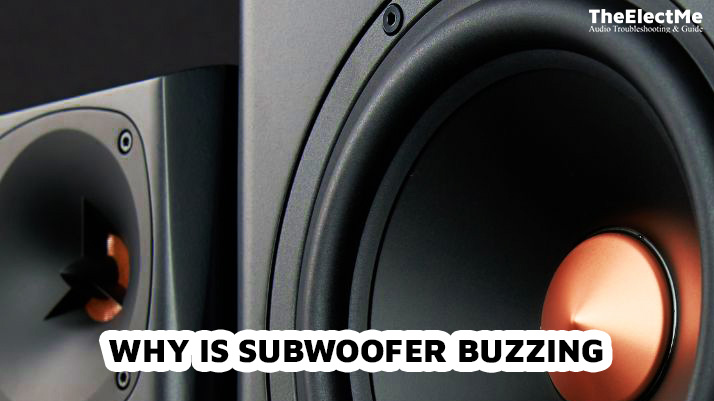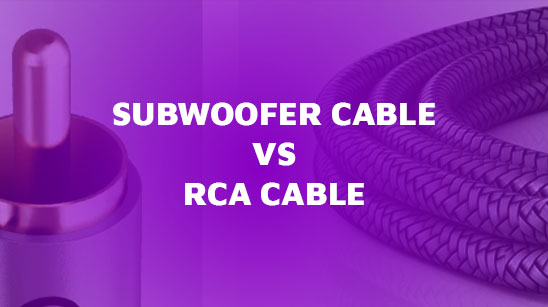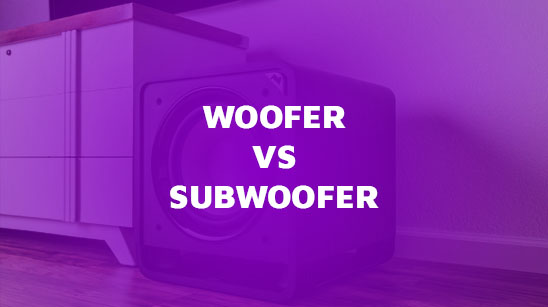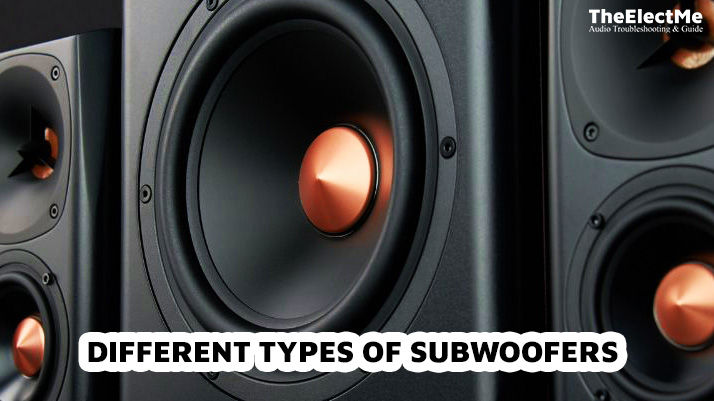Why is subwoofer buzzing? Electrical interference, improper grounding, or damaged cables are just a few reasons. When you invest in a subwoofer, you expect deep bass and crisp sound. But when your subwoofer starts buzzing, it can be frustrating and ruin your listening experience.

What to do when your subwoofer is buzzing? If you’re experiencing this issue, don’t panic.
So, read along and say goodbye to the annoying subwoofer buzz.
What Is A Subwoofer Buzzing Sound?
A buzzing sound can be described as a low-pitched humming or vibrating noise coming from your subwoofer. It can vary in frequency and intensity but usually is loud enough to be noticeable and disruptive.
This sound can occur anytime, even when the subwoofer is turned off. It can also be continuous or intermittent, making it difficult to pinpoint the exact cause.
Why Is Subwoofer Buzzing? 5 Reason Behind it
There are several potential reasons why your subwoofer is buzzing. Let’s discuss them one by one:
Ground Loop Interference
Ground loop interference occurs when multiple paths for electrical currents lead to a loop. This loop causes humming or buzzing sounds in the subwoofer.
This issue can arise due to improper grounding or differences in electrical potentials between connected devices. The result is unwanted noise in the audio system.
Cable Current Flow Issue
Buzzing often results from irregular current flowing through cables from the audio source to the subwoofer. Poorly shielded cables, damaged connectors, or loose connections can interfere with audio signals, causing a hum from the subwoofer.
Mechanical Misalignment
Mechanical issues like the subwoofer’s voice coil touching its magnet or other internal parts can cause buzzing noises. When subwoofer parts are misaligned or improperly in contact, friction and vibrations are caused. Then, the result is ultimately an unwanted buzzing sound.
Power Supply Problems
Power supply problems such as fluctuations, low voltage, or interference can lead to buzzing in the subwoofer. If the power source to the subwoofer is unstable or noisy, it can disrupt the audio output and cause disturbances.
Magnetic Pole Misalignment
Misalignment in the subwoofer’s magnetic poles, like in the cone or voice coil, can cause buzzing sounds. If magnetic fields are misaligned, they can disrupt driver movement. This interference can result in a buzzing or humming sound.
The dual drive speaker is also sometimes buzzing. After exploring the potential causes, it’s time to move on to troubleshooting and fixing the buzzing sound.

How To Fix A Subwoofer Buzzing?
When dealing with a buzzing subwoofer, the first step is identifying and isolating the issue. Here are some steps you can follow to troubleshoot and fix the problem:
Step 1: Check Power Source
Begin by verifying that the subwoofer is securely connected to a stable power outlet. Inconsistent power supply can often be a culprit behind the buzzing noise. Ensure the power source is reliable and properly grounded to prevent electrical interference.
Step 2: Inspect Signal Cables
Take a close look at all the signal cables connected to the subwoofer. Check for any signs of damage, wear, or loose connections.
Faulty wires can disrupt the audio signal and lead to buzzing issues. Replace damaged cables and ensure all connections are snug to eliminate potential sources of interference.
Step 3: Adjust Subwoofer Placement
Evaluate the placement of the subwoofer in your setup. Ensure it is positioned away from other electronic devices, power adapters, and sources of electrical noise.
Nearby electronics can introduce interference, causing the subwoofer to produce unwanted buzzing sounds. Optimal placement can help minimize such disturbances. The result is your subwoofer is blown.
Step 4: Test Grounding
Verify the grounding of both the subwoofer and the entire audio system. Proper grounding is essential to prevent ground loop interference, which can result in audible hum and buzzing.
Ensure all components are correctly grounded and consider using ground loop isolators to address grounding issues effectively.
Step 5: Update Firmware
Check if there are any available firmware updates for your subwoofer. Updating the firmware can resolve software-related issues that might be causing the buzzing problem.
Visit the manufacturer’s website or contact customer support to update your subwoofer’s firmware and potentially stop the buzzing.
After troubleshooting and making necessary adjustments, let’s move to the future prevention of buzzing sounds.
How To Prevent Subwoofer Buzzing?
When fixing the buzzing issue, you want to ensure It doesn’t happen again. Here are some preventive measures you can take to avoid future subwoofer buzzing:
- Use good quality cables with proper shielding to minimize interference.
- Routinely inspect and replace damaged cables or connectors.
- Keep the subwoofer away from potential sources of interference, such as electronic devices, power adapters, and other audio equipment.
- Regularly update the firmware of your subwoofer and other audio components to ensure optimal performance.
- Maintain proper grounding for all connected devices to avoid ground loop interference.
- If using a wireless subwoofer, keep it away from sources of Wi-Fi or Bluetooth signals, as they can cause interference.
Conclusion – Why Is Subwoofer Buzzing?
To sum up, a subwoofer can produce buzzing sounds for various reasons. The main reason is electrical interference, but mechanical issues and improper placement can also contribute to the buzzing. It’s crucial to troubleshoot and fix the problem promptly to prevent further damage.
Remember to check your power source regularly to avoid future buzzing problems. Proper maintenance and troubleshooting allow you to enjoy your subwoofer’s clean and smooth bass.



